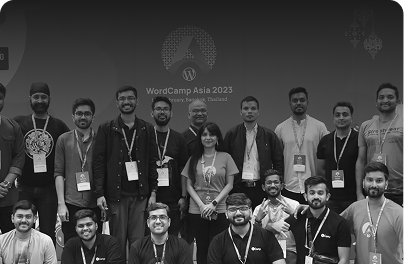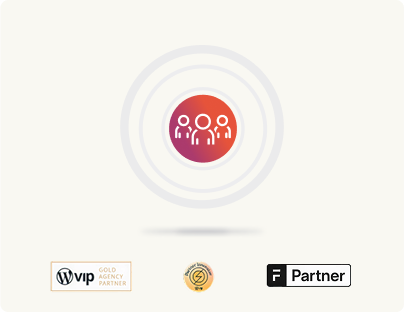Strapi vs headless WordPress: Key technical capabilities
When evaluating WordPress vs Strapi, it’s crucial to understand the key technical capabilities each platform offers, especially when considering scalability, customization, and ease of use. The backend capabilities of Strapi and WordPress differ significantly due to their architectural approaches. Strapi’s API-first design caters to modern, decoupled development workflows, while WordPress balances traditional CMS features with headless flexibility. Here’s a comparison of their key strengths and challenges.
Technical capabilities of Strapi
Strapi is designed as a developer-first platform, offering a highly extensible and flexible backend architecture that aligns with modern web development needs. Its API-first nature ensures seamless integration with any frontend framework while providing powerful tools for content management, authentication, and database interaction. Here’s an in-depth look at its backend capabilities:
1. API-first architecture and extensibility
Strapi is inherently headless, prioritizing API-based content delivery. This API-first design means that content is decoupled from presentation, making it easy to use Strapi as the backend for any frontend framework or application.
- Out-of-the-box REST and GraphQL APIs
Strapi generates APIs automatically based on the content types you define, significantly reducing development time. - Customizable endpoints
Developers can override the default API behavior with custom controllers, routes, and services, enabling tailored solutions for complex business logic. - GraphQL support
Built-in GraphQL integration allows developers to fetch data efficiently using structured queries, minimizing over-fetching or under-fetching of data.
2. Content modeling and relational data handling
Strapi excels in content modeling, giving developers the tools to design complex and hierarchical content structures with ease.
- Custom content types
Define single types (e.g., homepage) or collection types (e.g., blog posts) with granular control over fields and validations. - Relational data management
Support for relationships like one-to-one, one-to-many, many-to-many, and polymorphic relations ensures flexibility in linking data. - Dynamic zones and components
Modular content blocks enable dynamic content structures, perfect for building customizable and reusable content layouts.
3. Role-Based Access Control (RBAC) and permissions
Strapi includes a robust Role-Based Access Control (RBAC) system, ensuring secure and scalable user management:
- Custom roles
Define roles like admin, editor, or contributor with precise permissions for creating, reading, updating, and deleting content. - Granular permissions
Assign permissions at the API level, restricting access to specific endpoints or data types based on user roles.
4. Database options
Strapi’s database-agnostic architecture provides flexibility to work with various databases, catering to diverse project needs:
- Supported databases
Works seamlessly with MySQL, PostgreSQL, MongoDB, and SQLite, giving developers the freedom to choose based on performance, scalability, or cost requirements. - Dynamic migrations
Automatic database schema updates based on changes to content types ensure faster iterations during development.
5. Event-driven architecture
Strapi supports webhooks to enable real-time integrations and event-driven workflows:
- Webhooks
Trigger external processes when content is created, updated, deleted, published, or unpublished. - Custom triggers
Implement event hooks to perform backend logic during lifecycle events like data validation or custom notifications.
6. Custom middleware integration
Strapi allows developers to create and integrate custom middleware, enhancing the backend’s functionality:
- Logging and monitoring
Add middleware for request logging, error tracking, or performance monitoring. - Validation and preprocessing
Implement custom data validation or preprocessing before API responses are sent. - Third-party integrations
Seamlessly connect with external services like analytics platforms, payment gateways, or search engines.
7. Authentication and authorization
Strapi includes robust authentication and authorization systems to secure APIs and manage user access:
- Built-in authentication
Supports JWT for stateless sessions and OAuth for third-party authentication providers like Google or Facebook. - Custom Providers
Developers can implement custom authentication strategies tailored to specific requirements. - API Token Management
Manage API tokens with adjustable permissions, ensuring secure access for integrations.
8. Developer-friendly ecosystem
Strapi is designed with developers in mind, offering tools to streamline the backend development process:
- CLI and plugin system
A command-line interface (CLI) and extensive plugin ecosystem simplify customization and scalability. - Extendable codebase
Modify core functionalities through overrides and extensions, giving full control over the backend. - TypeScript support
Optional TypeScript integration ensures type safety and better code maintainability.
Strapi’s key strengths
- Highly extensible: Every aspect of the backend can be customized, from APIs to middleware.
- Flexible content modeling: Strapi provides unparalleled control over how data is structured and related.
- Modern authentication: Native support for JWT, OAuth, and custom strategies ensures secure and versatile access management.
- Database independence: Developers can choose from multiple databases based on project needs.
- Event-driven workflows: Webhooks and triggers make it easy to automate processes and integrate with external systems.
Strapi’s major limitations
- Developer-heavy setup: Strapi’s flexibility often comes at the cost of requiring advanced technical expertise for setup and maintenance. Strapi can be a classic example where its strengths also double as drawbacks. More than just a CMS, Strapi often feels like a developer’s playground—particularly in use cases that don’t require its specific headless superpowers.
- Frequent breaking changes: Updates, especially major versions, can introduce breaking changes that disrupt workflows and require developer intervention. While one of Strapi’s biggest challenges lies in its update cycles, they frequently include breaking changes. These changes can render existing functionality incompatible, forcing developers to invest significant time and effort in refactoring code, updating configurations, or revisiting workflows. For teams relying on stability, this constant need for intervention can disrupt project timelines and lead to unplanned costs.
- Multisite management: Lacks native multisite support, making it cumbersome to manage multiple projects or websites.
Strapi’s backend capabilities are robust and highly customizable, making it a powerful tool for developers. It enables effortless API generation, dynamic content modeling, and seamless integration with databases, all without being tied to a specific frontend. However, this power comes at the cost of heavy development dependencies. Strapi requires significant developer involvement for configuration, customization, and maintenance.
Technical capabilities of WordPress (headless)
WordPress, the most widely used CMS globally, has evolved to support headless implementations, allowing it to function as a backend content provider while decoupling the frontend(s). With its mature ecosystem, WordPress offers extensive tools for content management, plugin integration, and API customizations in such headless (and even hybrid) setups. Here’s a detailed breakdown of its backend capabilities.
1. REST API and WPGraphQL for content delivery
WordPress provides multiple options for delivering content via APIs, enabling headless CMS functionality:
- REST API
Built into the core, the WordPress REST API allows developers to fetch and manipulate content using standard HTTP methods.
WPGraphQL
A popular plugin, WPGraphQL, provides an efficient and flexible way to query data using GraphQL, offering structured queries and better performance.
2. Custom post types (CPTs) and fields
WordPress’s ability to create and manage custom post types makes it highly versatile for structuring content:
- Custom post types (CPTs):
Define unique content types (e.g., events, portfolios, etc.) to cater to specific project needs. - Advanced Custom Fields (ACF):
The ACF plugin allows developers to add custom fields (text, images, repeaters) to any content type, enhancing data organization and flexibility.
3. Custom plugins and extensions
WordPress’s plugin architecture is a cornerstone of its backend extensibility:
- Pre-built plugins:
Access thousands of plugins for SEO, analytics, and more, reducing the need for custom development. Many of the most popular WordPress plugins (like Yoast for SEO) have either already evolved for headless WordPress implementations or are actively considering doing the same. - Custom plugin development:
Developers can create tailored plugins to extend core functionality, such as custom API endpoints or advanced workflows. Because WordPress is so ubiquitous, skilled development talent is both widely available and accessible.
4. Role and user management system
WordPress includes a robust user management system with predefined roles and permissions:
- Predefined roles:
Roles like Administrator, Editor, Author, Contributor, and Subscriber allow for granular access control. - Custom roles:
Use plugins or custom code to define new roles and capabilities tailored to specific use cases.
5. Custom API endpoints
For developers seeking advanced API customizations, WordPress allows the creation of custom endpoints:
- Custom REST routes
Usingregister_rest_routehelps add new endpoints or modify existing ones. - Data validation and permissions
Built-in hooks ensure secure and validated API requests.
6. Authentication and authorization
WordPress offers multiple methods for securing API access:
- JWT authentication
Enable token-based authentication for stateless API access. - OAuth
Use plugins like OAuth Server for third-party integrations. - Cookies and nonces
Core WordPress authentication methods ensure security for logged-in users.
7. Webhooks for event-driven workflows
Webhooks can be implemented in WordPress to automate tasks or integrate with external systems:
- Trigger events
Use actions likepublish_postordelete_postto fire webhooks when content changes. - Integration options
Connect with external services like Zapier or custom scripts for notifications, updates, or syncs.
8. Database handling and migration tools
WordPress relies on MySQL/MariaDB for its database management, offering both stability and ease of use:
- MySQL/MariaDB
Structured database schema organizes posts, metadata, users, and taxonomies. - Data migration tools:
Use plugins like WP Migrate DB or WP All Import for seamless database transfers and migrations.
9. Developer ecosystem and extensibility
WordPress provides a rich ecosystem and tools to streamline backend development:
- Hooks and filters
Use actions (add_action) and filters (apply_filters) to modify core behavior without altering the core codebase. - Theme and plugin boilerplates
Pre-built templates and frameworks accelerate custom development. - CLI support
WP-CLI enables command-line management of WordPress installations, simplifying tasks like updates and migrations.
Key technical strengths of headless WordPress
- Extensive open-source community: A global community ensures rapid testing, timely patches, and ample resources for security and support.
- Established ecosystem: Thousands of plugins and integrations provide out-of-the-box solutions, speeding up development and lowering costs.
- Flexible content delivery: Supports traditional and headless setups with REST API and WPGraphQL for modern frontend integration. Some of the most high-traffic websites, like TechCrunch, seamlessly use WordPress for headless connectivity and delivery.
- Enterprise-ready: Highly customizable for complex workflows, integrations, and scalable editorial experiences.
- Innovative roadmap: Features like Interactivity API and block bindings improve development and editorial tools.
- Rich user management: Role-based access control with predefined and custom roles supports complex team workflows.
- Cost-effective: WordPress is generally the more accessible solution. Its extensive ecosystem often eliminates the need for custom-built solutions, reducing upfront development costs and ongoing maintenance expenses, making it a budget-friendly choice for headless implementations.
WordPress’s limitations
Implementing headless WordPress can present certain challenges, though many can be mitigated with proper configuration:
- Monolithic origins: WordPress’s traditional CMS architecture isn’t inherently optimized for API-first use cases. This is generally the case with very specialized website applications.
- Customization complexity: Advanced customizations often require expertise in PHP, hooks, filters, and a deep understanding of WordPress’s architecture. This can pose challenges for non-technical teams. Nonetheless, with the right configuration and support, these complexities can be managed effectively.
- Configuration-dependent: Headless WordPress implementations come with certain challenges. But they can be addressed through careful configuration and best practices. It’s essential to assess your organization’s technical expertise and project requirements to determine the best possible way to implement a headless WordPress setup that aligns with your goals.
WordPress’s backend capabilities make it an excellent choice for projects that require rapid deployment, extensive plugin support, and robust content management. Also, while its monolithic origins may appear to present challenges in highly customized or large-scale applications, these can often be mitigated with proper configuration.







